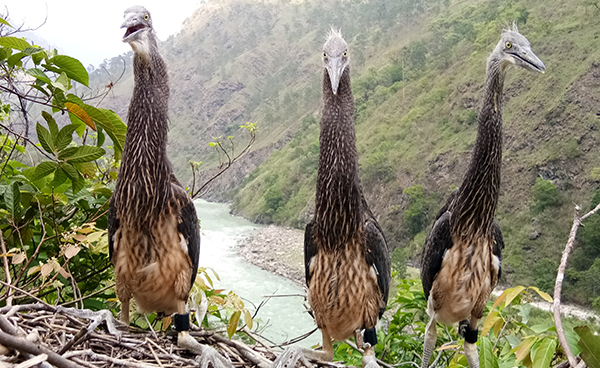 The White-bellied Heron annual population survey 2020 recorded 27 of these critically endangered birds, in the country this year. An increase of two compared to last year. This increase, however, is not very significant according to the Royal Society for Protection of Nature (RSPN).
The White-bellied Heron annual population survey 2020 recorded 27 of these critically endangered birds, in the country this year. An increase of two compared to last year. This increase, however, is not very significant according to the Royal Society for Protection of Nature (RSPN).
Indra Acharja, the Chief of Species and Habitat Conservation Division at RSPN said that while the increase in the population of the bird species is encouraging, the numbers are insignificant to achieve a stable wild population. “Whether it is 25 or 27 or 30, all these are very low, the population is not very healthy in the natural world. If we want to ensure the species survives in the ecosystem and if we want the species to flourish, we need to have at least 10 ten times the number that we have now.”
He added that at the end of June, four new white-bellied Heron juveniles fledged, increasing the count to 31. And this has been happening every year but the population is still decreasing.
“Based on our data, in the last 18 years around 80 new juveniles have been produced in Bhutan from around five nesting pairs. So the population should have been more than a hundred by now but that is not happening. A lot of herons are missing. We don’t know where they are going. Even if 20% of them are dying, there should still be a good increase in the population. So it’s still a process whereby we are trying to learn things and trying to mitigate the threats to the white-bellied herons,” said Indra Acharja.
The annual population survey covered all currently occupied and potential habitats of the white-bellied heron, along the three river basins of Punatshangchhu, Mangdechhu and Kurigongri. The survey report reveals that overall the size is ecologically not at equilibrium and there is a need to scale up the conservation efforts.
The RSPN with the Department of Forests and Park Services have been working towards conserving the critically endangered bird species since 2003. Some of the major conservation works include collaboration with the local community residing along the river basin and establishment of a captive breeding centre for the heron at Changchey in Tsirang.
White-bellied Heron is the world’s second-largest Heron and is categorized as critically endangered in International Union for Conservation of Nature or IUCN species red list. It is the rarest heron in the world and was first spotted in Bhutan by His Majesty The Fourth Druk Gyalpo in 1975. Under His Majesty’s command, the RSPN since 2003 has carried forward the conservation and protection of this species.
Sonam Pem









